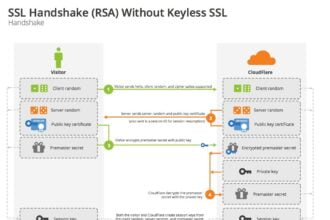If your business has made the leap into the cloud, then it is very likely that IT processes have become transparent and business productivity is improving. The whole idea behind the concept of cloud computing is to remove the backend maintenance and inconsistencies that may happen with even the best in-house server systems. Users should have less functionality issues, as many that would formerly stem from any number of hardware or software related issues are mostly eliminated as cloud computing generally only requires a web access through a browser and a functional computer.
If your business has made the leap into the cloud, then it is very likely that IT processes have become transparent and business productivity is improving. The whole idea behind the concept of cloud computing is to remove the backend maintenance and inconsistencies that may happen with even the best in-house server systems. Users should have less functionality issues, as many that would formerly stem from any number of hardware or software related issues are mostly eliminated as cloud computing generally only requires a web access through a browser and a functional computer. Unless an organization purchased a subscription through an underdeveloped cloud service provider, business has the tools it needs to optimize processes. So now the question remains, is your cloud service being utilized to its fullest potential?
As of this point in time, no cloud is impervious to disaster. There are events that can cause serious problems to the cloud, for example, should certain hardware fail at the center hosting, it will take time to restore service. Though much of today’s components are hot-swappable, a hard drive for example can take time to rebuild the data from back-ups or redundant array. On the service end, certain features may become inaccessible. This has happened with major service providers, like April of 2011 when Amazon Web Services had a disruption which affected much of the Eastern US. Amazon explained the error in detail here in an attempt to explain the re-mirroring issue the system their clusters use and why it failed.
In these instances, there is nothing that can be done by the end user. Just as web pages will, occasionally become unavailable for short periods of time, this may happen with a cloud service. It’s much the same for businesses that have an in-house system – eventually, it will require routine maintenance.
For these systems, maintenance is handled by staff at the facility but that does not mean IT can be completely cut from a business. Workstations may need a hardware or software repair. Some organizations use custom applications developed in-house and the cloud service may require configuration from the business end, depending on the type of cloud being utilized. The IT department needs to remain but those porting to a public cloud will not require much hands-on support. This enables a business to reduce head count hence saving on labor.
Network administrators can take on a few more tasks when not preoccupied taking care of hardware. Admins traditionally had to monitor hardware for preventative measures as well as to properly configure job scheduling. Most cloud services will automate these processes on the back-end unless it is an IaaS where control over the infrastructure will be left in the hands of an internal IT department. This will allow IT to configure a monitoring utility to ensure the integrity of the system. For some businesses, workstations and mobile devices connecting to the cloud need to be properly configured to meet data privacy laws, so it will be necessary to assign roles to users and limit actions when using the cloud service.
If properly configured, the public cloud has potential for every business. Though the cloud is not perfect at this time, it’s important to remember that nothing is flawless. Options should be explored to make sure the correct level of service is selected to meet the needs of an organization.
Author Bio:
Deney Dentel is the CEO at Nordisk Systems, Inc. Nordisk Systems is the only local IBM Premier Business Partner based in the Pacific Northwest, specialized in all IT solutions including cloud computing services, servers manged service, storage and virtualization.








